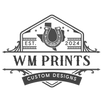In the rapidly evolving world of manufacturing, both 3D printing and CNC machining have carved out significant roles. They are crucial technologies that have disrupted traditional manufacturing processes, offering unique advantages and distinct functionalities. Here, we'll delve into a comparative analysis of these two leading technologies, assessing their applications, benefits, and limitations to help you make an informed choice for your project needs.
Understanding 3D Printing
3D printing, or additive manufacturing, is a process that builds objects layer by layer. This method allows for the creation of complex geometries that would be challenging or impossible to achieve with traditional manufacturing techniques. The flexibility of 3D printing is one of its strongest attributes, making it ideal for prototyping and custom projects.
Pros of 3D Printing:
- Complex Design: Capable of producing intricate and complex designs.
- Material Variety: Supports a wide range of materials, including plastics, metals, and composites.
- Minimal Waste: Only the required amount of material is used, which reduces waste.
Cons of 3D Printing:
- Build Time: Depending on the complexity and size of the object, printing can be time-consuming.
- Surface Finish: Additional post-processing may be needed for a smoother finish.
- Strength Limitations: Not all 3D printed parts have the same strength as those produced by subtractive methods.
Understanding CNC Machining
CNC (Computer Numerical Control) machining is a subtractive process that removes material from a workpiece to create the desired shape. This technology is renowned for its precision and ability to work with a variety of materials, including metals, plastics, wood, and composites.
Pros of CNC Machining:
- Precision: Highly accurate and capable of producing parts with tight tolerances.
- Strength and Durability: Produces parts that are often more robust than 3D printed ones.
- Speed: Typically faster for producing low to medium volume parts compared to 3D printing.
Cons of CNC Machining:
- Material Waste: As a subtractive process, it generates waste from the material removed.
- Complexity Costs: More complex designs may lead to increased machining times and costs.
- Setup Time: Requires significant setup, especially for unique or complex parts.
Choosing the Right Technology
The decision between 3D printing and CNC machining should be guided by several factors, including the project's material requirements, desired speed, cost considerations, and the complexity of the design. Both technologies have their unique advantages that can be harnessed based on the specific needs and constraints of a project.
For instance, if you're working on a project that requires intricate detailing and customization, 3D printing may be the best fit. Conversely, if strength, durability, and precision are priorities, CNC machining might be the way to go.
Conclusion
Both 3D printing and CNC machining offer valuable capabilities that can significantly enhance production processes. At WM Prints, we offer a range of products to support your manufacturing needs. Consider exploring our Lyman Type Prep Tools Holder to aid in organizing your machining and printing tools efficiently.
By understanding the strengths and limitations of each technology, you can better navigate the complex landscape of modern manufacturing and select the best approach for your creative and business goals.





